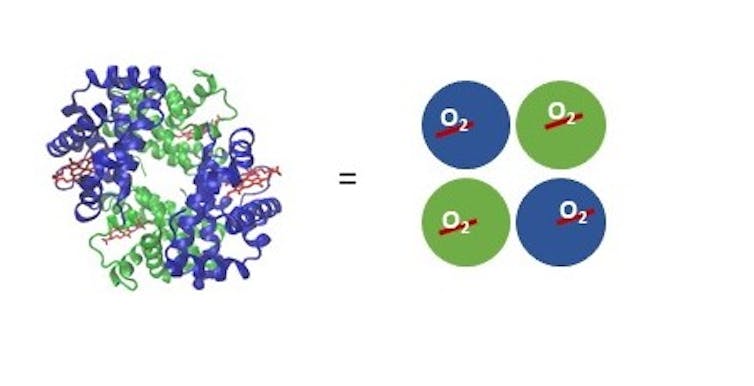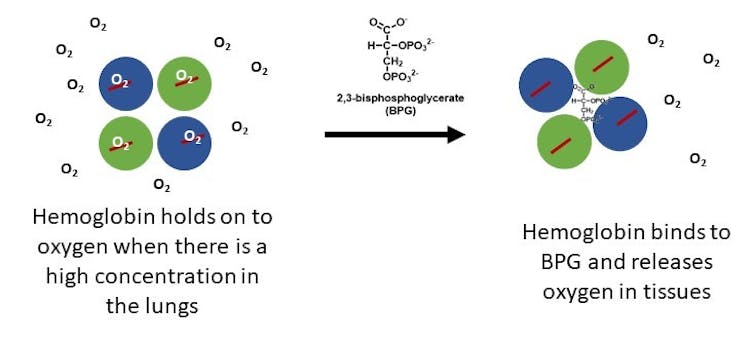How to Babies Breathe Inside the Womb Answers in Genesis
"Mothering" is synonymous with "nurturing," probably because moms kickoff providing for their kids even before they're born.
A fetus relies on its female parent to provide all the essentials. The placenta is key here; this organ develops in the uterus and is like a gateway that lets mom pass infant everything information technology needs to support its evolution.
Afterward the mother eats, her body breaks the food down into glucose, amino acids, fatty acids and cholesterol that travel through channels or transporters in the placenta to the fetus. They provide the energy and the edifice blocks that the growing fetus uses as it develops organs, tissues and bones.
Vital electrolytes similar sodium, chloride, calcium and fe pass through their ain specific channels in the placenta or simply lengthened from the female parent'due south side to the fetus's.
Fetuses require oxygen for growth, too. Since their lungs are non exposed to air, they tin can't exhale on their own. Instead they rely on their mothers to provide the required oxygen through a remarkable biochemical procedure.
I'yard a biochemist, and it's this procedure that made me autumn in honey with the discipline when I was a student. It's my favorite topic to present to my students today and helps explain why pregnant women tin can get so easily winded.
Oxygen running through your veins
Some ingenious biochemistry is at the root of how oxygen travels throughout the human body.
A protein called hemoglobin is responsible for picking upwardly oxygen in your lungs and carrying it via your bloodstream to all of your tissues. Hemoglobin contains iron, and it'due south responsible for blood's reddish color. It'south made upward of 4 subunits, two each of ii different types.

Each subunit contains one iron cantlet bound to a special compound chosen a heme that can interact with one oxygen molecule. It'southward an all-or-zero situation; for hemoglobins in the aforementioned vicinity, they're either all holding onto oxygen or take all released their oxygen. It depends on the concentration of oxygen in the environment the hemoglobin finds itself in.
When you take a good breath, the concentration of oxygen is high in your lungs. Hemoglobin in the expanse automatically picks up oxygen. And then it travels via your blood to tissues with lower oxygen concentrations, where it gives up the oxygen.

A molecule called ii,3-bisphosphoglycerate, or BPG, facilitates oxygen's release. It binds to the eye cavity between the four subunits of hemoglobin to help the oxygen molecules pop complimentary.
Getting oxygen to the fetus
Fetuses are not exposed to air, and their lungs don't fully develop until after they're built-in, so oxygen is another on the long list of things they must get through the placenta from their mothers.
Hemoglobin proteins are as well large to cantankerous the placenta. The maternal hemoglobins must give upward their oxygen molecules on their side so the oxygen can cross over and be picked upwards by the fetal hemoglobins on the other side. The predicament is that since this is all happening in such close quarters, the hemoglobins should either all be holding on to oxygen or all be releasing it.
In guild to circumvent this trouble, fetal hemoglobin differs in structure from maternal hemoglobin. With simply a few changes to the amino acids in its protein sequence, fetal hemoglobin does not bind well to BPG, the molecule that helps oxygen become loose from adult hemoglobin. Fetal hemoglobin also has a stronger affinity for oxygen than the developed version does.
Then at the placental interface, where there'southward a lot of BPG, the maternal hemoglobin lets go of the oxygen and the fetal hemoglobin grabs ahold of it tightly. This procedure allows for effective and efficient transfer of oxygen from the mother to the fetus.

Shortly before babies are born, they start making some adult hemoglobin so that when they are breathing on their ain, they can perform appropriate oxygen transfer throughout their little bodies. Usually by the time a baby reaches six months of age, the levels of fetal hemoglobin are very depression, replaced nearly completely by adult hemoglobin.
Academically, I knew about this remarkable biochemical process. Simply it wasn't until I was pregnant with my son that I really understood it. My miles in spinning class decreased, I lagged behind my hubby and dog on our daily walks, and I ran out of breath climbing the iii flights of stairs to my office. My son'southward hemoglobin was stealing my oxygen, so I had to breathe in more than to complete routine tasks.
In one case my infant was on the outside, breathing on his own with his mature hemoglobin functioning appropriately, I was more than amazed than always at the perfection of the scientific discipline.
[Insight, in your inbox each day. Y'all tin can become it with The Conversation's email newsletter.]
Source: https://theconversation.com/how-does-a-baby-breathe-while-inside-its-mom-130349
Post a Comment for "How to Babies Breathe Inside the Womb Answers in Genesis"